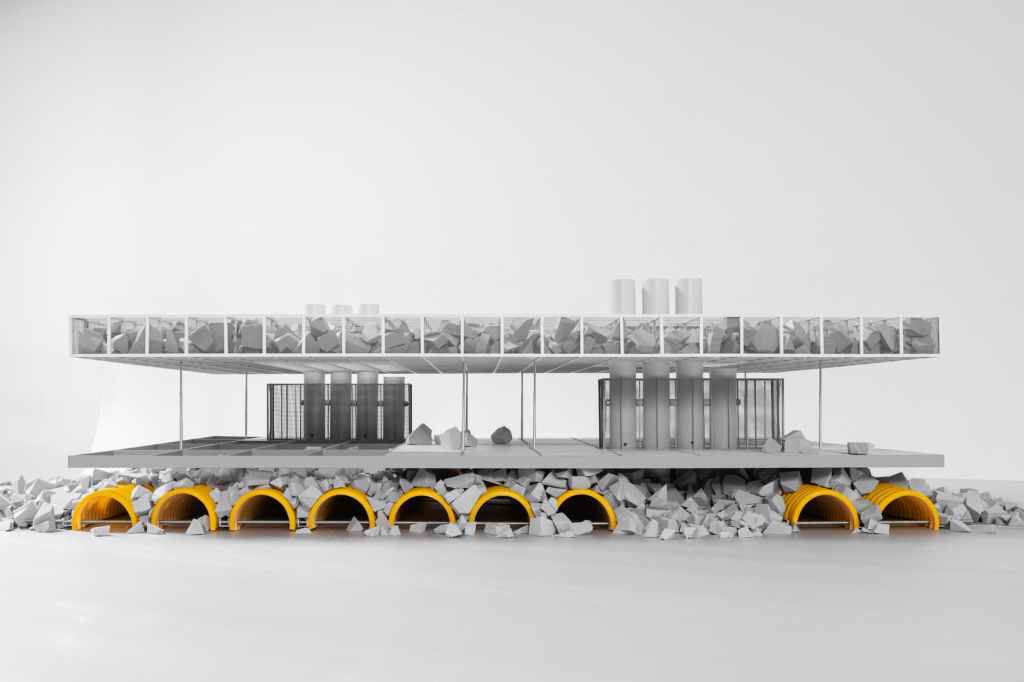Can microalgae fight climate change? Can public space double as passive cooling infrastructure? Can your next design tool save carbon instead of just tracking it?
These are among the questions being explored by the latest recipients of the AIA’s Upjohn Research Initiative, which announced four new grants totaling $120,000 to support cutting-edge applied research focused on climate action and sustainability in architecture. The selected projects investigate materials, workflows, and typologies—pushing the boundaries of traditional architectural knowledge toward more urgent, climate-responsive applications.
Launched to fund innovation in practice and bolster evidence-based design, the Upjohn Initiative has become a vital barometer of the AIA’s priorities, especially as the profession reckons with its role in the built environment’s carbon footprint. This year’s projects embody the AIA Framework for Design Excellence and align with the institute’s “Zero-Carbon” goals.
2025 AIA Upjohn Research Award Recipients
1. Algae Foam: Prototype for Buildings
Principal Investigators: Martin Bechthold, DDes; Daniel Tish, DDes
Could the insulation of the future be grown, not manufactured? This project explores the development of a thermal insulation material made from microalgae cultivated in wastewater treatment systems. Designed to have a low-to-negative carbon footprint, the algae foam aligns with the AIA Framework for Design Excellence, “Design for Resources” and “Design for Water,” aiming to replace fossil-based insulation materials with biodegradable, CO₂-sequestering alternatives. The project aligns with this year’s “Zero-Carbon” initiative, as it offers an alternative to conventional insulation materials that help to reduce operational emissions primarily caused by heating and cooling.
2. Integrated Carbon Dashboard for Residential Architecture
Principal Investigators: Vikram Sami, AIA; Teresa Moroseos, AIA; and team
Residential architecture accounts for 70% of U.S. building stock, but most carbon-tracking tools cater to large commercial projects. This research team is developing an open-access dashboard to help small firms–comprising around 60 percent of AIA member firms–design carbon-neutral homes. Although architects do not design many single-family homes, researchers believe this tool will help designers working on such housing stock achieve their goals. The project aligns with the “Zero-Carbon” initiative by promoting low-carbon design and educating small-firm architects and professionals. It also encourages “Practice Innovation” by integrating early design workflows and enhancing existing tools, such as connecting the “Materials” and “Energy” sections of the AIA Common App.
3. Masonry Material Recovery: Building Disassembly and Remanufacture for the Circular Economy
Principal Investigator: Dillon Pranger, AIA (Illinois Institute of Technology)
As demolition waste piles up, this team proposes an end-to-end rethink of masonry reuse. Using 3D scanning, digital twin modeling, and augmented reality, the researchers will prototype new workflows for recovering, cataloging, and reusing brick, CMU, and stone. The goal: to cut carbon emissions and reduce virgin material demand by making reuse not just viable, but desirable.
4. OPEN-GROUND: Public Space as Climate Infrastructure
Principal Investigators: Daniel Jacobs, RA; Brittany Utting, RA
How can urban design address climate at the micro scale? In this Houston-based project, shaded courts and plazas are reimagined as thermodynamic machines. Merging passive cooling, water catchment, and material experimentation, OPEN-GROUND tests how leisure spaces can serve double duty as decentralized climate infrastructure. Full-scale prototypes will be exhibited alongside a publication documenting the findings.
More Than a Grant—A Signal of Change
The Upjohn Research Initiative isn’t just about funding experiments; it’s a directional nudge for the profession. Each selected proposal points to emerging priorities—bio-based materials, small-firm tools, circular workflows, and climate-conscious public space—that redefine how architects can act on sustainability.
As architects face mounting climate responsibilities, these research efforts suggest a path forward: one rooted in rigorous experimentation, collaborative knowledge-building, and bold reimaginings of practice itself.
Learn more about past and present Upjohn projects at www.aia.org.
